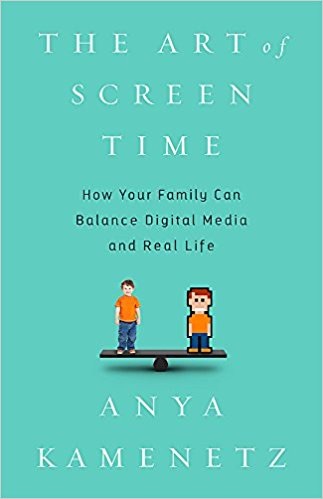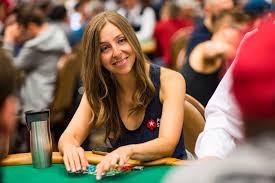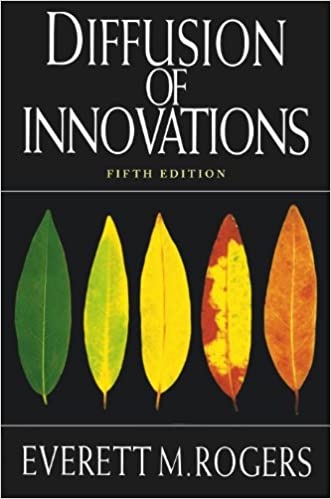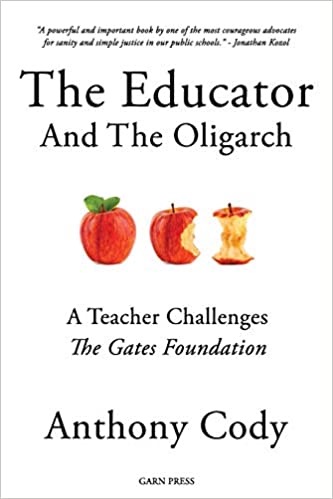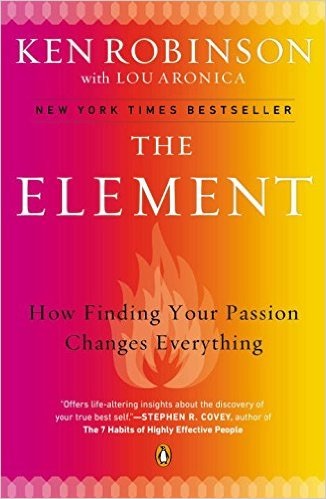Archive for the ‘Leadership Books’ Category
Wednesday, October 30th, 2024
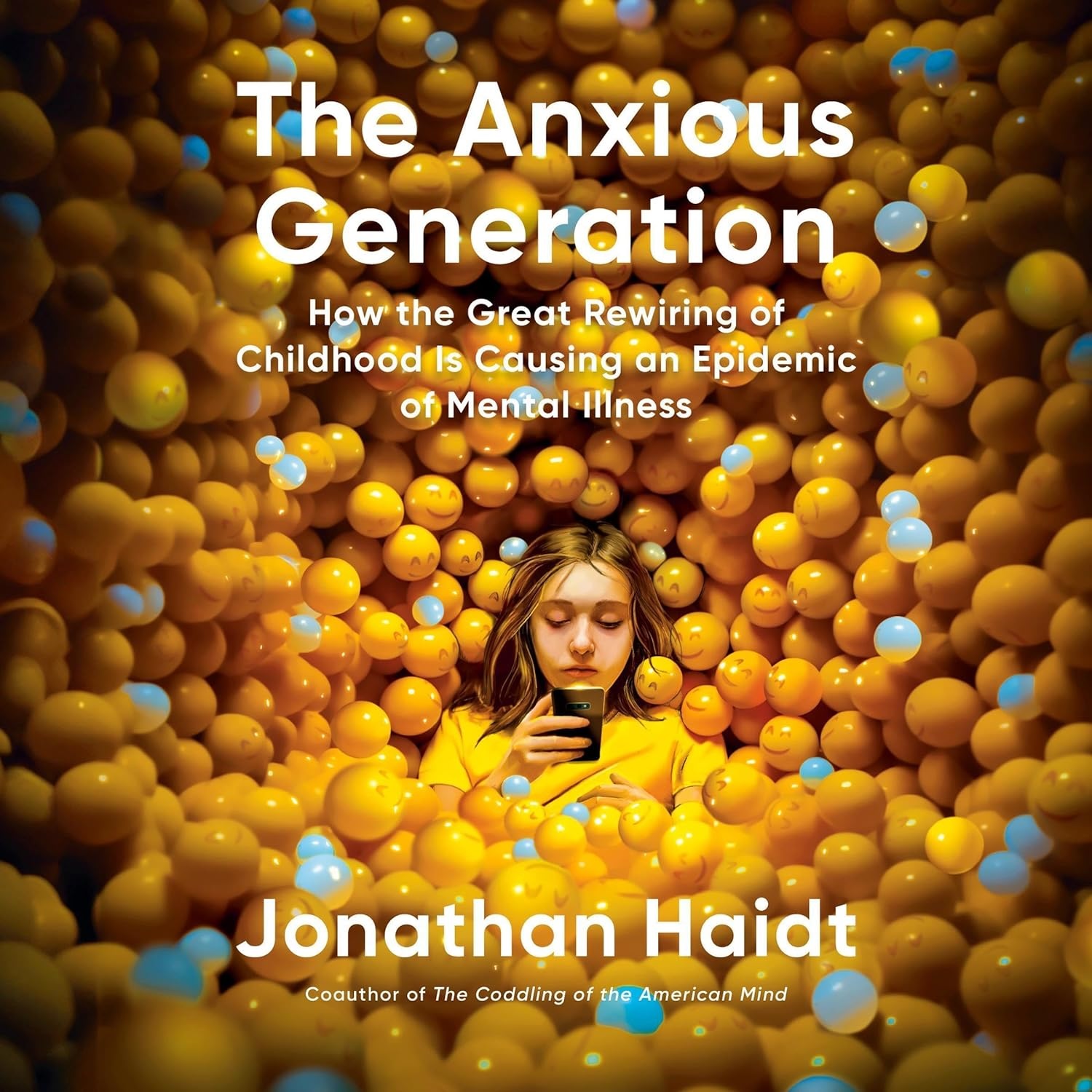
The Anxious Generation: Hoe the Great rewiring of Childhood I Causing an Epidemic of Mental Illness by Jonathan Haidt warns of the harm done to children who live in a phone-based world with limited opportunity to play and connect with the real world. There is serious research to support banning phones in schools and keeping kids off of social media until they turn 16. This could well be the most important book I have summarized out of well over 200. Every principal, teacher, and parent needs to read it.
Introduction<: Growing Up on Mars
- Jonathan uses the analogy of letting your kid live on Mars or giving them a smart phone with limited or no constraints. The people of generation Z (born after 1995) are at ground zero for increased mental health problems caused by overprotection in the real world and under protection in the virtual world.
- While there wasn’t research when the tech industry foisted technology on this generation, we have it now. It shows that kids with smart phones are more depressed and depression increases with more use. It’s more harmful for girls who favor social media, but it is also a problem for boys who get lost in games and porn. Childhood has gone from play-based to phone-based.
Part 1: Tidal Wave – 1. The Surge of Suffering
- In 2010 the iPhone 4 was introduced, the first cellphone with a front-facing camera. The Android version followed the same year. That year, the Instagram app was introduced. Although it was popular, it took off when Facebook bought it in 2012. The years from 2010 to 2015 are considered to be, by the author, as the years of the Great Rewiring of Childhood.
- It was these years when rates of anxiety, depression, self-harming, and suicide increased from 67% to 134%. Anxiety happens when you perceive threats. This is normal. What isn’t normal is perceiving many threats that aren’t real. Depression is marked by sadness and not feeling pleasure. These are things that seem to happen to kids when they have constant access to the Internet.
Part 2: The Backstory: The Decline of the Play-Based Childhood – 2. What Children Need to Do in Childhood
- Human children grow quickly until about two years and they grow slowly until puberty. The brain is about 90% of its final size by age five. Then it spends a lot of time making new connections and losing old ones. Play is children’s work. Children deprived of play can come out socially, emotionally, and cognitively impaired. When adults are involved, play is less free, less playful, and less beneficial. Experience, not information is the key to emotional development.
- Unstructured time with friends plummeted when students moved from basic phones to Internet phones. Parent distraction with their phones interferes with the bond between parent and child. Synchronous activities are essential for development. Social media draws students into endless hours of asynchronous communication. Phone-based activity can seem more like work than play. Using social media shapes children to the culture of the sites they visit. Conformist bias motivates children to copy what they see and prestige is gained by people who pile up the most likes.
3. Discover Mode and the Need for Risky Play
- Since the 1990s, parents have tended to overprotect children from the real world and under-protect children from the online world where more dangers lurk. Human evolution has been shaped by two behavior modes. The discover mode is one where you detect opportunities and explore them. The defend mode features identifying threats and finding ways to escape them. The more time a child spends in the discover mode the happier and more sociable they will be. By overprotecting kids we doom them to lots of time in the defend mode.
- Beginning with Gen-Z, children were given less freedom including outside play. When they started showing up on campus in 2014 counseling centers were overwhelmed as students grew up spending too much time in defense mode. They hadn’t learned to deal with stress so they weren’t very strong. They lacked the risky play that would keep them in discover mode. We need to keep kids as safe as necessary, not as safe as possible. They need to expect challenges from the real world. Safety-ism crushes play and the power it has.
- (Doug: You won’t learn how to deal with conflict and frustration without experience.)
Posted in Book Summaries, Education Books, Leadership Books | Comments Off on The Anxious Generation: How the Great Rewiring of Childhood I Causing an Epidemic of Mental Illness by Jonathan Haidt
Monday, March 12th, 2018
The Art of Screen Time: How Your Family Can Balance Digital Media and Real Life by Anya Kamenetz reviews the scant research on the subject and provides others’ stories and her own experience and advice. In short, she advises you to enjoy screens not too much and mostly together with your family. Parents and educators are well advised to read this book.
Part 1. Kids and Screens – 1. Digital Parenting in the Real World
- How worried should we really be about kids and screens? Where is all of this heading, and what should we actually do about it—now, in the “real world,” a phrase that as of the early twenty-first century still has some meaning? These questions have resulted in this book. Anya belongs to the first generation of parents who grew up with the Internet. Now she is raising two members of the first generation growing up with screens literally at their fingertips. For this book, Anya surveyed over 500 parents along with as many experts on the subject that she could find. While real research is lacking, this looks like the best effort to date to define the problem and propose answers.
- The best evidence we have currently suggests that if you are functioning well as a family otherwise, there is a huge amount of leeway in the screen radiation your kids can absorb and still do just fine. The children of lower-income, less-educated parents, however, are both more exposed to screens at younger ages and are more subject to a host of other ills. Hypocrisy and inconsistency in boundary-setting makes for confused, sometimes angry kids—and lots of conflict. A better approach is to discover and unleash the joy of screen time with your kids. Particularly when shared, screen time can have meaningful benefits: creative, emotional, and cognitive. In a nutshell, enjoy screens, not too much, and mostly with others.
2. The (Sometimes) Scary Science of Screens
- The federal government hasn’t funded media research since 1982, and needless to say, many questions have presented themselves since then. The research on kids and screens is in its toddlerhood at best. It may seem that experts are just as confused as parents. It’s important to note that in order to get published, research tends to focus on the harms, and you can’t randomly assign babies to watch television or not. What’s happening all over the world is a giant experiment, and there is essentially no control group.
- The bulk of evidence we have about kids and screens concerns television. That’s all right because children still do more passive video watching than any kind of interaction with screens. Interactive media is different, but is it more harmful or more benign? What further confounds the research is that well-to-do parents are more likely to limit screen time and their kids will probably do fine anyway. Poor kids, however, are more likely to live in homes where the TV is on all the time, even if no one is in the room. Wealthier parents can hire sitters to entertain the child while the TV is off.
- Young children are obsessed by repetition. It helps them learn new words and concepts and provides touchstones of predictability within a chaotic and sometimes scary world. Electronic media satisfies this need for repetition. For tweens and teens, electronic media is a lifeline to the experiences they crave most: thrills, a space to explore independently, and 24/7 access to peers. Excessive screen time can interfere with sleep, which is necessary for allowing the brain to repair itself. Kids who give up exercise for screen time are prone to obesity.
3. Emerging Evidence
- Now we take up the matter of low probability, high-risk issues. Some of the worst cases of video addiction stop hanging out with friends, stop talking to their families, stop coming downstairs for dinner, even stop going to school. Poor hygiene and obesity are also common. At some point, they become candidates for residency rehab programs like those offered to drug addicts. Reintegration after such programs can also be difficult.
- Here are the questions that doctors ask to determine if there is an addiction. 1. How often do you find that you stay online longer than you intended? 2. How often do others in your life complain to you about the amount of time you spend online? 3. How often do your grades or school work suffer because of the amount of time you spend online? 4 How often do you snap, yell, or act annoyed if someone bothers you while you are online? 5 How often do you lose sleep due to Internet use or game playing?
- If it is recognized as a stand-alone disorder, it can be covered by health plans and schools may have to treat it as a disability as they increasingly hand every student a laptop. Screen addiction is usually associated with other disorders like Autism, OCD, and ADHD, but so far we don’t know which causes which. Removal of screens, however, has caused symptoms of disorders to lessen in some cases.
- No screens at all before age two, according to the American Academy of Pediatrics was first uttered in 1999. The AAP now says that video chat, and other social purposes like looking at family pictures together, is probably okay for children younger than age two. While there is no evidence of harm caused to kids by screen time. the general consensus is that parents should strive for moderation. Two hours a day or less is a common recommendation.
Posted in Book Summaries, Education Books, Leadership Books | Comments Off on The Art of Screen Time: How Your Family Can Balance Digital Media and Real Life by Anya Kamenetz
Saturday, October 10th, 2020
The Biggest Bluff: How I Learned to Pay Attention, Master Myself, and Win by Maria Konnikova chronicles her journey as a PhD psychologist and journalist into the world of professional poker. She starts with zero knowledge and experience and with the help of mentors and lots of hard work becomes a poker champion. While the framework for this book is the game of poker, each chapter features generalizations that we can all draw on to add quality to our lives.
A Prelude – Las Vegas, July 2017
- We start with a story from the World Series of Poker, which is The World Cup, The Masters, and The Super Bowl for poker players. Anyone can enter as long as they put up the $10,000 entry fee. This can be a lifetime dream for many. As play continues Maria’s seat sits empty while the dealer takes the anti for each hand from her piles of chips and tosses her cards into the discard pike known as “the muck.” She is in the bathroom curled up in a fetal position on the floor after barfing her brains out due to eating some bad guacamole. At the time she understood the line between skill and luck. The message is that you can’t calculate for dumb bad luck and you can’t bluff chance.
Ante UP – New York, Late Summer 2016
- Here we meet Erik Sidel, one of the top poker players of all time. Maria approaches him to see if he will mentor her for her experiment, which involves seeing if a psychologist with zero knowledge of poker can have success after spending only a year learning the game. Eric knows that most people who get serious about the game come at it thinking a deep knowledge of math is the most important attribute. He knows that a deep understanding of psychology is more important as the necessary math his not that hard to master. He also sees Maria’s language skills as another key attribute. (She is fluent in English and Russian, was fluent in Spanish and French, and can get by in Italian.) Eric accepts the challenge and it’s game on. You don’t play poker, you play the world.
The Birth of a Gambler – Boston, Fall 2016
- Life is a gamble. It may not seem like playing poker, but in some sense, much of life features less control than you have as a skilled poker player. Here we have a conversation with Maria’s grandmother (Baba Anna) who is very disappointed that Maria is taking up poker rather than a “real job.” Skilled stock pickers do no better than chance in the long run while professional poker players routinely outplay amateurs. In poker, the best hand doesn’t always win. This sets it apart from other games. The process of betting gets your full attention unlike making a decision where no bet is involved. This allows you to benefit from life’s decisions as well. Accurate probabilistic thinking is rare, but it is necessary for success in poker. Like people who predict the weather and horse races, poker players get immediate feedback and have no one to blame but themselves.
The Art of Losing – New York, Fall 2016
- Eric’s step one is to read the poker books by Dan Harrington, cousin to the golfer Padraig Harrington. Next, you need to watch streams with real hands being played by the best players. Sign up for the Run It Once a poker coaching site. Then start playing for real online for tiny stakes that can gradually get bigger. From there you can proceed to small tournaments and then move up to bigger ones. You need a balance between aggressive and conservative playing so that your opponents can’t figure you out. You also need to keep track of everyone’s stack size.
- Here we encounter the importance of learning from losing. (Doug: The concept of learning from failure is found in many of the other books I have summarized.) You have to constantly think, analyze, and stay objective. This is hard to do. This means that you never take things personally as you treat triumph and disaster the same. Disaster can bring true objectivity. Eric teaches Maria that there is no certainty, only thought. There are no right answers regarding any situation without a greater context. Self-awareness and self-discipline should be your twin goals.
The Mind of a Strategist – New York, Late Fall 2016
- Maria starts practicing online, but in order to do so, she has to take a train from Manhattan to New Jersey as online poker is illegal in New York State. She picks a puppy as her avatar and “psychchic” as her screen name. She describes a hand she loses and finds that she made a mistake by trying to copy a hand Eric had once and acted aggressively so as not to look weak. Time is an issue online and in real tournaments as it is in real life. In both cases, you want to use the time you have to think things through, but not act impulsively as time starts to run out. When playing you want to be the last one to act as that will give you maximum information.
- The military analogy applies here. You need to know the enemy and survey the nature of the board in each hand. Like a general, you need to decide just how many of your troops you need to deploy. Everything from a scout to every soldier you have is in play. Your strategy cannot be predetermined. Another analogy is that of a jazz band where once it’s your turn you have to decide what to play.
- If you only bet when you have top cards your opponents will figure that out and you won’t win much. You will lose more as you won’t often have top cards. This is why you have to bluff on occasion. Maria tells the story of getting an offer to write an article about what she was doing. She said no several times until she got an offer of $3/word. Like sometimes in poker, she got more out of her hand then she thought she could.
Tags: Eric Sidel, Maria Konnikova, Phil Galford, Poker, Texas hold 'em
Posted in Book Summaries, Business Books, Leadership Books | Comments Off on The Biggest Bluff: How I Learned to Pay Attention, Master Myself, and Win by Maria Konnikova
Friday, August 31st, 2012
The Click Moment: Seizing Opportunity in an Unpredictable World by Frans Johnasson ( © 2012, Portfolio/Penguin: New York, NY) will help you to be more prepared when click moments show up. These are somewhat random events that prepared minds can take advantage of to promote success. The great stories he uses as examples serve to make this a most engaging and valuable book. Please consider clicking on the Amazon icon at the bottom of each page as you read my summary.
Posted in Book Summaries, Business Books, Leadership Books | Comments Off on The Click Moment by Frans Johansson
Tuesday, April 3rd, 2012
The Connected Educator: Learning and Leading in a Digital Age by Sheryl Nussbaum-Beach and Lani Ritter Hall, ( © 2012, Solution Tree Press: Bloomington, IN) introduces the concept of Connected Learning Communities as a three-pronged approach to effective professional development. This is valuable resource that all schools need to make available to teachers and teacher support staff. It contains step-by-step instructions, real-life examples, comprehensive research, a detailed glossary, and helpful hashtags and links.
Posted in Book Summaries, Education Books, Leadership Books | Comments Off on The Connected Educator – Book Summary
Friday, February 4th, 2022
The Diffusion of Innovation (5th ed) by Everett M. Rogers is THE book for anyone who wants to understand this phenomena. This is the 2003 version, but it is still very current. I used this book a lot when I was doing my dissertation and revisit the concepts via this summary from time to time. This is my longest book summary so it may take more than one sitting to finish it. I think it will be work your time.
Chapter 1 – Elements of Diffusion
- Getting a new idea adopted, even when it has obvious advantages is difficult. Therefore, a common problem for individuals and organizations is how to speed up the rate of diffusion of an innovation. Diffusion is a process in which an innovation is communicated through certain channels over time among the members of a social system. A degree of uncertainty is involved and the process can be planned or spontaneous. It results in one kind of social change and leads to certain consequences.
Element 1
- 1) The innovation: It is an idea, practice, or object that is perceived as new. If it seems new, it is an innovation. The adoption process is an information seeking and processing activity in which an individual is motivated to reduce uncertainty about the advantages and disadvantages of an innovation. The characteristics of innovations, as perceived by individuals, help explain their different rates of adoption.
/li>
Element 2
- 2) Communication Channels: The essence of the diffusion process is the information exchange through which one individual communicates a new idea to others. Mass media channels are usually the most rapid and efficient means of informing an audience. Interpersonal channels involve face-to-face exchanges. A third form involves the interactions between individuals via the Internet.
Element 3
- 3) Time: The inclusion of time in diffusion research is one of its strengths. The five steps in the process are: knowledge, persuasion, decision, implementation, and confirmation. There are five adopter categories that are time-based. The first adopters are called innovators. They are followed in time by early adopters, the early majority, the late majority, and laggards. When the number of adopters is plotted over time, an S-shaped curve results.
Element 4
- 4) A Social System: This is a set of interrelated units that are engaged in joint problem solving to accomplish a common goal. Social systems have structure that gives regularity and stability to human behavior (norms). It allows one to predict behavior with some degree of accuracy. The communication in a system also has a structure. Knowledge of the system’s structure is necessary if one wishes to study diffusion within the system.
Some History
- A series of independent groups started this research in the 1940’s and 1950’s. Each group was invisible to the others and used different approaches. They all, however, found the diffusion followed an S-shaped curve and the innovators had higher socioeconomic status than did later adopters. By the late 1960’s the independent groups had come together as shown by the increase in cross-tradition citations.
Gabriel Tarde
- Tarde was a French lawyer and judge around 1900. He observed that for every ten new ideas that spread, ninety will be forgotten. He also observed that the rate of imitation usually followed an S-shaped curve and that the takeoff in the curve begins to occur when the opinion leaders in a system use a new idea. Forty years later his observations were put to the test by empirical research.
The Nine Major Diffusion Research Traditions
- 1) Anthropology – The study of how tribes or villages use technological ideas such as the steel ax, horses, and boiling water.
- 2) Rural Sociology – The study of how farmers in rural communities adopt agricultural ideas such as weed sprays, hybrid seed, and fertilizers.
- 3) Education – The study of school systems, teachers, or administrators as they adopt teaching/learning innovations like kindergarten, modern math, programmed instruction, and team teaching.
- 4) Public Health and Medical Sociology – The study of individuals or organizations such as hospitals and health departments as they adopt medical and health ideas like drugs, vaccinations, family-planning, and AIDS prevention.
- 5) Communication – The study of individuals and organizations as they adopt technological innovations and new communications technology.
- 6) Marketing and Management – They study of individual consumers as they adopt new products.
- 7) Geography – The study of individuals and organizations as they adopt technological innovations.
- 8) General Sociology – The study of individuals and other units as they adopt a wide variety of ideas.
- 9) Early Sociology – The study of communities or individuals as they adopt things like city manager government, postage stamps, and ham radios.
- Other traditions include economics, public administration, political science, psychology, industrial engineering, statistics, and others.
A Word About Education
- Unlike some fields, innovations adopted by education are done so by organizations rather than individuals. Early studies were carried out by Paul Mort at Columbia University. He found that the best single predictor of innovativeness was expenditure per student. The stereotype of the rich suburban school as highly innovative was largely confirmed. Mort found that considerable time lags were required. It took kindergartens about 50 years to be completely adopted. Driver training needed only 18 years while modern math needed only 5 years. Both were promoted by change agencies. The insurance companies and auto manufacturers in the case of driver training and the National Science Foundation for modern math.
Tags: Diffusion of Innovations, Everett M Rogers
Posted in Book Summaries, Business Books, Education Books, Leadership Books | Comments Off on The Diffusion of Innovation, 5th ed by Everett Rogers
Saturday, December 29th, 2012
The Dragonfly Effect: Quick, Effective, and Powerful Ways to Use Social Media to Drive Social Change by Jennifer Aaker and Andy Smith with Carlye Adler, (©2010, Jossey-Bass: SanFrancisco, CA). will help you harness the power of social media to achieve a single, focused, concrete goal. The authors also hope you will be inspired to use social media for social good. Think of this as your playbook for moving your cause from awareness to action. To be successful, you must translate your passion into a powerful story that generates contagious energy. Jennifer and Andy draw on abundant psychological research to show you how to do this. They also provide many inspiring stories to make their points and inspire their audience. Click the icon at the bottom of any page to purchase this book.
Jennifer Aaker and Andy Smith
- They are a married couple. Jennifer is a Professor of Marketing at Stanford University’s Graduate School of Business where she teaches a course on social media. Andy is a principal of Vonavona Ventures, where he advises on marketing, customer strategy, and operations. The book also contains a forward by Chip Heath, coauthor of Made to Stick, and Switch.
.
The Dragonfly Model
- The Dragonfly Effect, like the dragonfly, relies on four wings that achieve great results when they work together. It starts with focus. This is where you identify a concrete measurable goal. Next you grab attention by telling a personal story with unexpected, visceral, and visual aspects. Then you engage, which is where you empower your audience to care enough to want to do something. Finally, you enable and empower others to take action. To make action easier, you must prototype, deploy, and continuously tweak your approach towards making your audience team members.
Wing 1 – Focus – The HATCH Principals
- There are five design principles associated with the focus wing. First is humanistic. You first need to understand who your audience is. Listen, observe, ask questions, and empathize. Second is to make your goal actionable by breaking long-term goals into a number of short-term goals that are small, actionable, and measurable. Third is to make a goal testable. You need to measure progress and success somehow. Fourth is clarity. Goals need to be highly specific. Failures often involve goals that are vague, conflicting, or too numerous. The final principle is happiness. Your goal must be personally meaningful. The prospect of happiness will serve to motivate.
Wing 2 – Grab Attention – How to Stick Out
- Aaker and Smith suggest four design principles for grabbing attention. First is get personal. This can be a personal hook, using one’s name, or tagging someone’s picture. Second is to deliver the unexpected. The element of surprise can result in viral behavior, and you need to be original. Third is to visualize your message. Pictures trump words in terms of grabbing attention. You can juxtapose two images, combine images, or replace one with another. Finally you want to make a visceral connection. Do what you can to trigger the senses of sight, sound, hearing, or taste. Use music to tap emotions.
Posted in Book Summaries, Business Books, Education Books, Leadership Books | Comments Off on The Dragonfly Effect: Quick, Effective, and Powerful Ways to Use Social Media to Drive Social Change by Jennifer Aaker and Andy Smith
Saturday, October 31st, 2020
The Educator And The Oligarch: A Teacher Challenges The Gates Foundation by Anthony Cody shows how the Gates Foundations’ efforts to reform education have had a mostly negative impact. By spending a small fraction of the total education budget, people like Gates can buy politicians, muzzle the media, and control many special interest groups and non-profit organizations with grant money aimed at advancing their agenda. Please purchase this book and spread the word. (Note: Like every other book summarized here, this one was written prior to the COVID-19 pandemic.)
Preface and Introduction
- The thrust of this book is that something is seriously wrong with our system when one of the richest men in the world can spend a few billion dollars and seize the reins of education policy. By funding almost everyone who does advocacy, including teacher unions, Gates can call the tune. The tune is Common Core and associated tests that are designed to yield wide-spread failure. Like tobacco companies in the 1960s, their sponsored research tells them what they want to hear. This undermines the public’s democratic control of education and devalues the teaching profession. There is nothing generous in using the power of wealth this way.
- Unlike previous grant efforts by wealthy foundations, the Gates Foundation’s approach was different. Their starting point was “we know what is broken and we know how to fix it.” They invite proposals by directly contacting organizations. They then collaborate with the organizations to develop proposals that align with their agenda. With their vast wealth, an entire sector of organizations became dependent on their funds.
Part I: The Assault on Public Education by Bill Gates
1. Bill Gates’ Big Play: How Much Can Money Buy in Education?
- Gate’s vision starts will the total reliance on standardized tests that were already required by federal law (NCLB). These tests were flawed and NCLB was bound to fail so it was necessary to develop a new generation of tests based on new standards known as the Common Core. It also helped to get staff from the Gate’s Foundation transferred to the Federal Department of Education. Gates held that the field of education didn’t know much about teaching. He started by funding research that defined effectiveness as high test scores. This means that teachers get paid for these results. Next, he donated to advocacy groups to the extent that he became their largest donor. The final step was to donate to the media’s efforts to cover education.
2. Circular Reasoning at the Gates: Education Nation Off to a Confusing Start
- Here are excerpts from a Teacher Town Hall from 2011 on NBC moderated by Brian Williams. He tells the audience that they will be using facts provided by the Gates Foundation as they are the largest single funder of education in the world. (Doug: I think the US government is the largest single funder.) On this show, Melinda Gates claims that there are multiple measures that they are using along with test scores such as administrator and peer observations along with student questionnaires. But, the only models of these other measures that she wants to use are those that improve test scores. Here the author suggests that many of the strategies used to boost scores are harmful to our students.
3. Teachers Face Good Cops or Bad Cops in Push for Evaluations
- The bad cop is the New York Post, which published the names of teachers with the worst scores. The good cops are Bill Gates and Michelle Ree who said this is wrong and that multiple measures should be used in addition to tests. Their other measures, as we have seen, are correlated to test scores. These good cops also push value-added ratings (VAR), which research has shown to be highly unstable for individual teachers. Translation: VARs are garbage and should never be used as part of a teacher rating system. There is also the false assumption that there are a significant number of crummy teachers who need to be weeded out. (Doug: From what I’ve seen as an educator since 1969, crummy teachers weed themselves out as being a bad teacher really sucks.) As it stands, 50% of teachers leave the profession within five years and turnover rates in high-poverty schools are 20% each year.
4. Cui Bono? The Question Rarely Asked, Let Alone Investigated
- Cui bono means who benefits. Journalists should be asking this question, but they don’t seem to be doing so. They are, however, repeating false ideas that the reformers put forward such as our public schools are failing due to the ineffective teachers that need to be fired. They also tout the success of charter schools, which overall is not the case. The winners here are the testing companies, curriculum designers and publishers, consultants, technology and software companies, and various leadership organizations.
5. Bill Gates Discovers Money Cannot Buy Teachers
- The main idea here is that people, in general, can sense when they are being manipulated and coerced. When this happens they resent it and resist. Here we are talking specifically about teachers. They aren’t opposed to being evaluated based on student work such as portfolios, but they resist being evaluated by invalid standardized tests that are closely correlated with the socioeconomic background of their students. Teachers, therefore, are justified in being ungrateful for all the money Gates has poured into education to remake it in his own image.
6. Bill Gates Goes to College. Has He Learned From His k12 Project?
- Gates is also determined to change higher education with a focus on tests that measure specific skills that employers want. His focus is also on online courses, which have been shown to be less effective for all save the brightest. (Doug: We are seeing that now as well with remote learning) The approach sends the message that education is only for job preparation, which the author rejects. Blended learning, which offers a mix of online and in-person instruction appears to be effective, but 100% online doe not appear to be.
7. Is ASCD Embracing Market-Driven Education Reform?
- Organizations like ASCD are being directly paid to support the implementation of Common Core, which converts them into advocates for the controversial standards. Along with it comes “market-driven” systems, which feature a push for charter schools, private schools, and vouchers at the expense of public schools. In 2011, the Gates Foundation awarded ASCD a grant of $3 million to help implement the Common Core. If you just read ASCD’s journal you wouldn’t know that the Common Core is controversial.
8. Is Gate’s Money Going to Influence the National Board?
- While Gates claims that teachers participated in the creation of the Common Core Standards they were not involved. He also tries to convince us that since the schools can create the curriculum, teachers can still teach as they wish. He negates this when he says that he will know that his efforts have succeeded when the curriculum and the tests align with the standards. He pushes for control of schools by mayors as when just one person is in charge, change can be made more efficiently. It also means that he only has one person he needs to influence or buy off. Note that cities, where mayors are in charge, have fared worse. Other organizations know that if they want his money they have to sing this tune.
9. Gates and Duncan Seek to Use Trust in Teachers to Promote Common Core.
- If Gates and the Department of Education under Duncan (appointed by Obama) trusted teachers, they would not have had Common Core standards drafted by test makers instead of educators. They would not have created the pseudoscience of VAM to try to hunt down bad teachers. If leadership organizations were true leaders, they would not have allowed themselves to be co-opted and bought off. Gates seems to operate by bad analogies. One mentioned here is “standardization is important to allow for innovation… like the standardized outlets we have in our houses.” He sees innovation as the domain of the creators of mass-produced tools and the teachers as consumers. He accuses teachers of not knowing much about effective teaching, which is why he came up with the Common Core and its testing to define excellence.
Posted in Book Summaries, Business Books, Education Books, Leadership Books | Comments Off on The Educator And The Oligarch: A Teacher Challenges The Gates Foundation by Anthony Cody
Tuesday, September 6th, 2016
The Element: How Finding Your Passion Changes Everything by Ken Robinson, PhD (©2009, Penguin Books: New York, NY) deals with the point where natural talent meets personal passion. Ken explores the conditions that lead us to live lives filled with passion, confidence, and personal achievement. The stories about people from a wide variety of fields entertain and inspire. The book is a classic. If it’s not on your shelf, click the icon below to get your copy. If you read it a while ago, my summary will be a good review. Also check out Sir Ken’s TED Talks.
Sir Ken Robinson
- Sir Ken is an English author, speaker, and international advisor on education in the arts to governments, non-profits, education, and arts bodies. He was Director of The Arts in Schools Project (1985–89), Professor of Arts Education at the University of Warwick (1989–2001), and was knighted in 2003 for services to education. Originally from a working-class Liverpool family, Robinson now lives in Los Angeles with his wife Marie-Therese and children James and Kate.
Introduction
- We are all born with tremendous natural capacities, and we lose touch with many of them as we spend more time in the world. Ironically, one of the main reasons is education itself. Young children are confident in their own imagination and usually see themselves as being creative when they start school. By the time they finish formal education, most don’t feel that way. Ken uses the stories of people who did find their Element and offers them to help us all do the same. Most of the stories were gathered via direct interviews that often feature twists, turns, and surprises.
Who’s Stories?
- Here are some of the people who’s unlikely stories help make this book so special: Matt Groening – Simpsons creator, Gillian Lynne – dancer and founder of company that did Cats and Phantom of the Opera, Paul Samuelson – economist and author, Paul McCartney – Beatle, John Cleese – Monty Python member, Mick Fleetwood – drummer Fleetwood Mac, Bart Conner – Gold Medal Gymnast, Gordon Parks – Founder of Essence Magazine, Buckminster Fuller – architect, Ewa Laurance – woman’s world billiards champion, Aaron Sorken – award winning writer for stage, movies, and television, Meg Ryan – Actress, Arianna Huffington – creator of The Huffington Post, and Richard Branson – Entrepreneur.
Tags: Ken Robinson, The Element
Posted in Book Summaries, Education Books, Leadership Books, What can Dr. Doug do for you? | Comments Off on The Element: How Finding Your Passion Changes Everything by Ken Robinson
Sunday, January 27th, 2019
The Formula: The Universal Laws of Success by Albert-László Barabási explains how his team discovered these laws and how they can apply to your life and the lives of those you touch. While successful people throughout the ages had no idea of why they succeeded, you don’t have to. This is certainly one of the most important books I have summarized to date. Be sure to get a copy for your school.
Introduction
- Albert and his team gathered data on people who achieved success in as many fields as possible. The assumption is that success leaves a trail of data points behind it such as publications, museum exhibits, sales, and even sports statistics. The idea was to find a series of recurring patterns that drive success in most areas of human performance. This is not about success as judged by the individual as that leaves no trail. As a result of this effort, we have the universal laws of success..
1. The Red Baron and the Forgotten Ace
- This starts with the story of Manfred von Richthofen, Germany’s ‘Red Barron’ who shot down eighty allied planes during World War I. His success was magnified by the German government and he did what he could to blow his own horn. His fame lives on thanks to Charles Schultz and Snoopy. Contrast him to René Fonck, a French pilot who may have shot down as many as 127 German planes. Fonck is an example of outstanding performance without success. He is like the opposite of Kim Kardashian. This reminds us that success and fame are very different. Albert tells stories of other people who did something first only to see a latecomer get the credit. Success, therefore, is about how you and your performance is perceived by others.
2. Grand Slams and College Diplomas
- The First Law: Performance drives success, but when performance can’t be measured, networks drive success. It’s time to see the largely invisible networks that shape our success.
- First we see that some areas like academic performance with metrics like SAT scores and GPAs and tennis with its precise ranking system are much different from most fields where accurate performance metrics don’t exist. The interesting finding here is that ambition along with performance seems to be important. Students who are rejected by top colleges like Harvard do just as well as students who go there due to their ambition. This suggests that the schools don’t really matter. It’s the student who matters.
3. The $2 Million Urinal
- Now we look at a field where there is no easy metric to judge performance, the field of fine art. Here what matters most is your network. This network is composed of curators, art historians, gallery owners, dealers, agents, auction houses, and collectors. At the center of the story is a toilet simply signed by Marcel Duchamp that sold for $2 Million dollars. Albert also points out that the Mona Lisa didn’t become the world’s most famous painting until it was stolen and wasn’t found for two years. This shows the importance of context. There is a trove of data here that contains information about where artists have shown their works. Again we see that the ambition to have your works shown in top galleries along with persistence and expanding your network are key attributes. Like students ambitious enough to apply to Ivy League schools, artists ambitious enough to promote their works to top galleries are the ones more likely to succeed.
Posted in Book Summaries, Business Books, Education Books, Leadership Books | Comments Off on The Formula: The Universal Laws of Success by Albert-László Barabási







